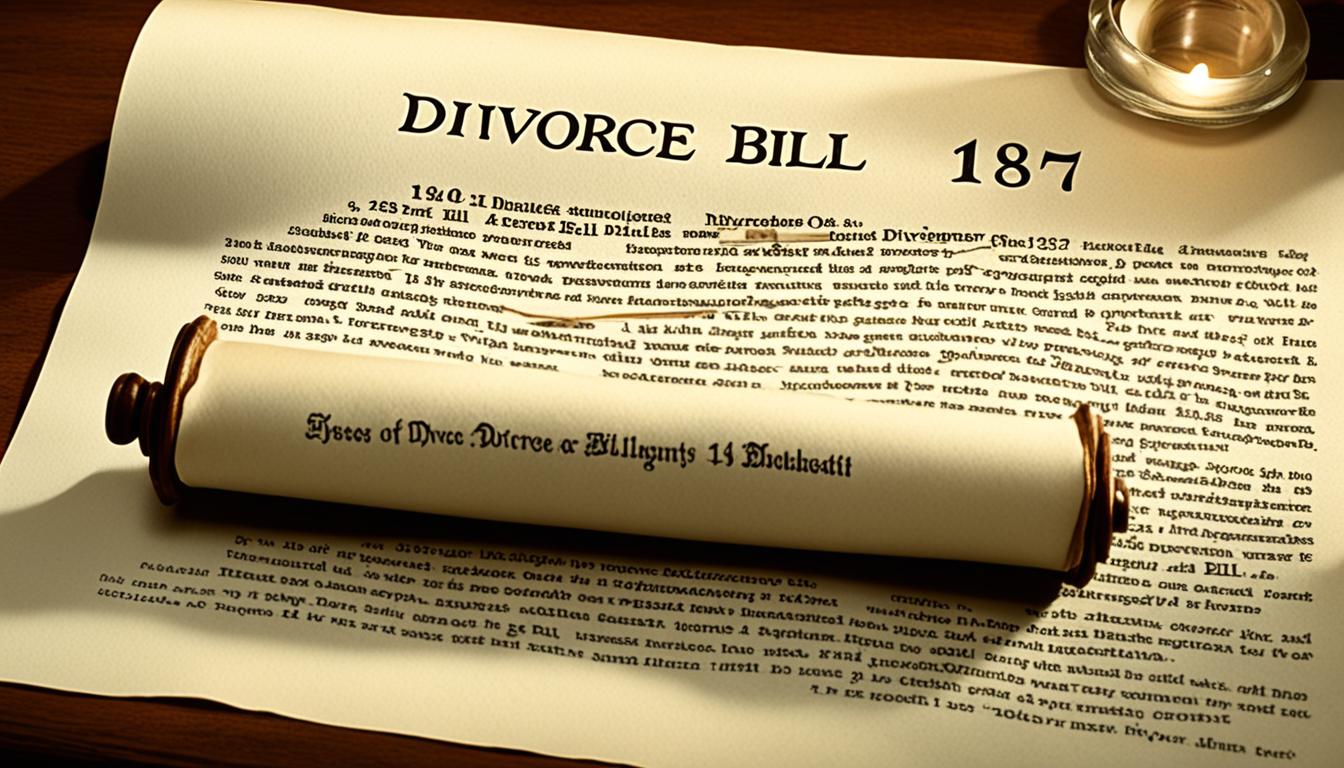Have you ever wondered how to navigate the complex process of getting a divorce when you have limited finances?
The steps involved in obtaining a divorce with limited funds can seem daunting, but there are practical strategies to help you through.
From exploring fee waiver programs to understanding the importance of financial documentation, each step plays a crucial role in securing the assistance you need.
As we uncover the intricacies of this process, you'll find valuable insights on low-cost options and avenues for free legal aid that could make all the difference in your divorce journey.
Key Takeaways
- Apply for a divorce fee waiver to ease financial burden.
- Obtain and fill out divorce forms accurately.
- Provide detailed financial documentation for assistance eligibility.
- Seek legal aid or consider self-representation for cost-effective divorce proceedings.
Divorce Fee Waiver Process
Have you ever wondered how you can navigate the Divorce Fee Waiver Process when you have limited financial resources? When facing the daunting prospect of a divorce, worrying about expensive court fees can add to the stress. However, there's a solution in the form of a fee waiver for those with limited finances. This process is specifically designed to provide financial assistance to individuals in need during divorce proceedings, allowing them to file for divorce without the burden of hefty court fees.
To obtain a fee waiver, the court typically requires proof of indigence through financial documentation. This documentation is crucial as it demonstrates your inability to afford the court fees associated with the divorce process. By following the necessary steps to waive fees and submitting the required financial documentation, you can obtain the assistance needed to move forward with your divorce without the added financial strain. Remember, seeking a fee waiver can be a vital first step in alleviating some of the financial burdens associated with divorce.
Obtaining and Filing Divorce Forms

To efficiently initiate the divorce process, begin by acquiring the necessary divorce forms from local court websites or courthouses. Once you have the forms in hand, follow these steps to ensure a smooth filing process:
- Complete Forms Accurately: Take your time to fill out the forms with precise information about children, assets, debts, marriage date, and the reason for divorce. Accuracy is crucial to avoid delays or complications in the legal proceedings.
- Specify Requests Clearly: Indicate any requests for child support, alimony, or division of marital assets unambiguously in the provided forms. Clarity in your requests will help streamline the settlement process.
- Follow Guidelines: Make sure to adhere to the specified guidelines for completing and submitting the necessary paperwork. This will help prevent any issues during the filing process and keep your divorce proceedings on track.
- Seek Assistance if Needed: If you encounter any difficulties or have questions while filling out the forms, consider reaching out to legal aid services for guidance to ensure everything is in order before filing.
Providing Financial Documentation
When assembling the required financial documentation for your divorce proceedings, it's essential to include proof of income, assets, debts, and expenses to present a comprehensive overview of your financial situation. This includes providing pay stubs, W-2 forms, and tax returns to demonstrate your income status.
Detailing assets such as savings accounts, real estate, and vehicles, along with their respective values, gives a clear picture of what you own. Make sure to disclose debts, including credit card balances, loans, and mortgages, to showcase your financial obligations accurately.
Additionally, presenting documentation of expenses like rent, utilities, and other monthly costs is crucial to support any requests for a fee waiver based on financial need. Ensure that all your financial documents are accurate, up to date, and well-organized for easy submission to the court.
Legal Aid and Assistance Options

For those facing financial constraints during divorce proceedings, exploring available legal aid and assistance options becomes crucial for navigating the legal process effectively. Here are some options to consider:
- Legal Aid Eligibility: Individuals below 125% of the federal poverty guidelines may qualify for legal aid services. Providing proof of income is typically required to determine eligibility.
- Free Legal Assistance: Contact organizations like the Legal Services Corporation for access to free legal aid services tailored to your financial situation.
- Pro Bono Services: State bar associations often offer pro bono legal assistance for those in need. Attorneys may volunteer their time to help individuals with limited resources.
- Self-Representation: If you don't qualify for legal aid or pro bono services, self-representation is an option, especially in uncontested divorces. Consider fee waivers or payment plans for navigating divorce fees and settlement processes effectively.
Finalizing the Divorce Process
Navigating the finalization of the divorce process involves attending court hearings to formalize the dissolution of marriage, marking a significant step towards closure and moving forward with separate lives. After reaching an agreement or having the court decide on issues like child custody and asset division, the divorce is finalized. It is essential to ensure that all necessary paperwork is completed and submitted to expedite the finalization process. Post-finalization, both parties receive a decree of divorce or a judgment from the court, officially recognizing the termination of the marriage. This moment signifies the beginning of separate lives for the individuals involved, allowing them to start anew. Below is a table summarizing key aspects of finalizing the divorce process:
| Key Aspects | Description |
|---|---|
| Court Hearings | Attending hearings to formalize the dissolution of marriage. |
| Agreement or Court Decision | Reaching an agreement or having the court decide on issues like asset division and child custody. |
| Paperwork | Completing and submitting all necessary paperwork for the finalization process. |
Frequently Asked Questions
Can I Get a Divorce Fee Waiver if I Don't Meet the Income Requirements?
If we don't meet the income requirements, we can still explore options for a divorce fee waiver. It's essential to communicate with the court, provide necessary documentation, and explain our circumstances thoroughly to seek assistance.
How Can I Handle the Emotional Stress of Going Through a Divorce With No Money?
Navigating divorce without financial resources can be emotionally taxing. We understand the strain it brings. Seek support from loved ones, consider counseling, and focus on self-care. Remember, "This too shall pass."
Are There Any Resources Available for Counseling or Therapy During the Divorce Process?
Yes, there are resources available for counseling or therapy during the divorce process. Many organizations provide low-cost or free mental health services. Seeking support can help navigate the emotional challenges that often accompany divorce.
What Options Do I Have for Finding Affordable Housing if I Have to Move Out During the Divorce?
When finding affordable housing during a divorce, consider reaching out to local housing authorities, non-profit organizations, and shelters. It's crucial to explore all options available and seek assistance from community resources for support.
Is There a Support Group or Community Organization That Can Provide Guidance and Assistance for Navigating a Divorce With Limited Funds?
Yes, there are support groups and community organizations that offer guidance and assistance for navigating divorce with limited funds. These resources can provide emotional support, legal advice, and practical tips to help you through this challenging time.
Conclusion
Navigating a divorce with no money is like finding your way through a storm without a compass. But with determination and resourcefulness, you can weather the challenges ahead.
Remember, just as a rainbow appears after a storm, there are options and support available to help you through this difficult time.
Stay strong, be proactive, and know that there's a path forward towards a brighter future.











